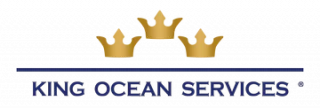Businesses that run out of cash are on the verge of being out of business altogether.
Poor cash flow management has shuttered many a small business, but it doesn’t have to threaten yours.
Make sure you’ve got a clear understanding of what operating cash flow (OCF) is, why it matters and how to calculate it—and invest in the digital tools you need to put your company’s cash flow to work—and you’ll be able to protect your company’s financial health while having sufficient working capital to invest in innovation and growth.
What is Operating Cash Flow?
Every business needs cash to keep its pistons pumping. Operating cash flow represents the amount of cash your business generates through sales of goods and services in a specific time period.
Small business owners, financial experts, and accounting professionals rely on accurate and timely operating cash flow statements to provide a clear picture of how well their organizations can meet their current liabilities and unexpected expenses while still engaging in investing activities, research and development, financing activities, etc.
Operating cash flow can be positive or negative. A positive OCF (i.e., being cash flow positive) indicates you have greater cash inflows than outflows at a given point in time.
Conversely, a negative OCF (i.e., being cash flow negative) means you don’t and are headed for serious financial trouble.
Managing cash flow risk by maintaining a positive cash flow is crucial for all small businesses; the United States Small Business Administration estimates 82% of all small business owners suffer business failure due to cash flow problems.
The most basic method for calculating operating cash flow is to subtract your total operating expenses from gross revenue, although you’ll almost certainly need a more detailed approach to gain the transparency needed to make effective business decisions.
Note: While operating cash flow is often assumed to be the same as net profits or net income, they are distinct from one another. Businesses can (and do) report net profits while being cash flow negative.
Why? Because net income is a figure viewed at 10,000 feet, so to speak. Simply subtracting operating expenses from gross revenue will give you a thumbnail sketch of a company’s financial performance, yes. But it can’t tell you when cash inflows and cash outflows are happening, and so doesn’t really reveal the truth about your organization’s daily financial health.
Say, for example, Company X and Company Y both report identical net profits. Company X has strong revenues, but poor controls for collecting its accounts receivable. As a result, it regularly suffers cash shortfalls that keep it from covering payroll, rent, and other current liabilities.
Meanwhile, Company Y has prioritized automation, analytics, and data management as part of its business process optimization plan, and therefore collects its accounts receivable in a timely fashion.
Both companies may have the same net profits, but Company Y has a significant competitive advantage because it has greater versatility and control in managing its working capital—and isn’t risking damaged relationships, supply chain disruptions, and operational delays due to insufficient cash.
OCF helps you monitor where cash is flowing, when it’s moving, and how it will affect your balance sheet and income statement.
Why Operating Cash Flow Management Matters
Aside from its value as a high-level metric for profitability, OCF provides a reliable indicator of your company’s overall performance.
OCF helps you monitor where cash is flowing, when it’s moving, and how it will affect your balance sheet and income statement.
A timely and accurate operating cash flow calculation can help you:
- Understand how much cash your organization is generating daily from core operating activities.
- Ensure you have enough to cover fixed expenses.
- Decide whether it’s safe to invest in new technologies and equipment while maintaining sufficient liquidity to cover expenses and emergencies.
- Plan effectively for product development, business expansion, etc.
- Monitor the cost-effectiveness of your core business activities.
- Determine when and where to reduce expenses to cover potential sales slumps or seasonal changes in your business. Examples include:
- Negotiating extended payment terms with suppliers.
- Tightening your company’s accounts receivable terms.
- Raising prices.
- Reducing inventory purchases (assuming adequate existing stocks)
- Obtaining short-term loans or other funding as required.
It’s important to note that while OCF does provide a limited view of financial preparedness, the cash flow statement is not a panacea for assessing and managing your company’s long-term financial health.
OCF doesn’t allow for direct industry comparisons, as it doesn’t measure the company’s overall efficiency (although it does help provide context).
So while a company with substantial capital investments/working capital expenditures may have lower cash flows than a competitor with less, it may be more financially healthy and competitively fitter.
Also, because it can only assess a company’s cash position for a specific date, OCF can’t be used to provide a company’s overall liquidity or solvency. It is best applied in reporting and forecasting to make strategic spending plans that address future needs.
Using the Operating Cash Flow Formula
You can calculate your operating cash flow using one of two methods: Direct or Indirect. Both adhere to the Generally Accepted Accounting Principles (GAAP).
Direct Operating Cash Flow Calculation
Straightforward and easy to calculate, this method relies on the basic formula for calculating OCF:
Total Revenue – Total Operating Expenses = OCF
Direct OCF calculations are ideal for startups, sole proprietors, partnerships, etc., as small businesses of this size generally have very basic revenue streams and expenses.
This makes a more granular view of your company’s financial performance less necessary, but never unnecessary.
For businesses of all sizes, a direct OCF calculation is best used as a starting point if you’re looking to maximize your ability to manage your working capital effectively.
A sample operating cash flow statement created using the direct method might look something like this:
| Tom’s Widget Hut | Debit | Credit |
| Sales Revenue | $52,000 | |
| Cost of Goods Sold (COGS) | ($7,000) | |
| Wages | ($20,000) | |
| Utilities | ($1,500) | |
| Interest Paid | ($1,500) | |
| Operating Cash Flow | $22,000 |
Indirect Operating Cash Flow Calculation
The Indirect method of calculating operating cash flow is more nuanced, relying on the following formula:
Net Income +/- Changes in Working Capital + Noncash Expenses = OCF
Where:
- Net Income is the amount remaining once all operating expenses have been deducted from total revenue.
- Changes in Working Capital are calculated by comparing a company’s current assets (e.g., accounts receivable) to its current liabilities (e.g., accounts payable). Increases in assets are subtracted, while decreases are added to the total. The inverse is true for liabilities.
For example, securing extended payment terms would create a net positive for cash flow by freeing available cash for a longer time period, while inventory purchases will reduce cash flow (despite inventory being a current asset) by reducing available working capital. - Noncash Expenses are entries on the income statement representing accounting activities not directly tied to cash inflows and cash outflows—for example, amortization and depreciation are noncash items. Amortization records declining value in intangible assets, such as patents, copyrights, franchise agreements, etc. Depreciation is used to measure the costs associated with tangible, fixed assets over time, such as buildings, vehicles, office furniture, etc.
Let’s return to our example company, Tom’s Widget Hut. Tom’s business has grown substantially and he wants a more granular view of his operating cash flow.
Tom currently has $250,000 in net profits, $85,000 in outstanding accounts receivable, and $12,000 in outstanding accounts payable.
He’s also added a delivery van to his assets, which generates a depreciation expense of $5,000 every year.
Tom’s Indirect Operating Cash Flow Statement might look something like this:
| Tom’s Widget Hut: Operating Cash Flow Statement | |
| Net Earnings | $250,000 |
| Changes in Working Capital | |
| Accounts Receivable (-) | ($85,000) |
| Accounts Payable (+) | $12,000 |
| Noncash Expenses | |
| Depreciation and Amortization (+) | $5,000 |
| Operating Cash Flow: | $182,000 |
With an operating cash flow of $182,000, it’s clear Tom’s Widget Hut has sufficient working capital generated by core business activities to meet its obligations while still generating enough extra income to cover investment activities, product development, and innovation, driving growth.
Optimizing Cash Flow with Technology
In order to make the best possible use of your statement of cash flows, you need clean, complete, and accurate data. Investing in a comprehensive procure-to-pay software package such as PLANERGY gives you access to data management, automation, and analytics technologies that improve your visibility into, and control over, your committed spend.
With well-optimized, automated processes, centralized data management that eliminates data and communication silos, and powerful data analysis and reporting tools, you can be confident in the accuracy of all your cash flow calculations—and all your other financial statements, too.
This makes it easier to plan investments, set aside funds for a rainy day, and develop new products and markets while still covering your obligations (along with the occasional unexpected expense).
Keep Your Cash Flowing Free and Clear for Profitability and Growth
It’s just one aspect of your company’s overall financial health, but a clear view of operating cash flow is an essential part of any successful plan for managing working capital—and building the value that drives a thriving business.
Make sure you have the right tools, along with clear and accurate spend data, and you’ll be able to leverage your OCF to make smart, strategic spending decisions for growth and profitability while protecting your liquidity, business continuity, and competitive agility.




